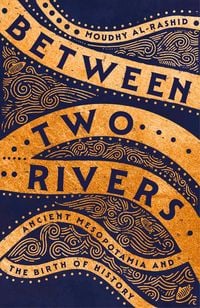More on this book
Kindle Notes & Highlights
Read between
August 4 - August 9, 2025
The earliest cuneiform tablets come from the city of Uruk, not far from Ur, and were written in roughly 3350 BCE, around the time that Stonehenge might have been built and seven centuries before the great Pyramid at Giza.
Frank Hermens liked this
Ur rose to prominence around 2300 bce when Sumerian cities were conquered by King Sargon. He and his army came from a city called Akkad, the remains of which are yet to be found.
Frank Hermens liked this
Sargon and his dynasty brought with them an entirely new culture and language, Akkadian, the earliest known Semitic language and a distant ancestor of the Arabic widely spoken in the region today.
Frank Hermens liked this
After their capital city Babylon was sacked in 1595 BCE, the Amorites fade from the upper echelons of Babylonian society to be replaced by another foreign tribe, the Kassites (who kick off the Kassite period). Little is known of their native language and origin, as they seem to have quickly assimilated into the local culture, perhaps to peacefully assume power, which they retained for over 400 years. After that, a new Babylonian dynasty rises to power in 626 BCE in what we call the Neo-Babylonian period, meaning Princess Ennigaldi-Nanna was a ‘Neo-Babylonian’ in our understanding.12 This last
...more
Frank Hermens liked this
This mythical account of the birth of writing originally ran to 640 lines, but today we only have various-sized scraps of this story, known as Enmerkar and the Lord of Aratta. Almost 100 lines survive on one clay copy that is almost 4,000 years old.
Frank Hermens liked this
Both in reality and in myth, the first writing developed out of necessity, made possible by serendipity. The same geological circumstances that made southern Mesopotamia fertile enough for surplus agriculture also left behind rich deposits of clay, which allow for the birth not just of writing, but of humanity itself. According to Mesopotamian mythology, clay becomes the medium that the gods use to make the first human beings (and then human beings go on to record those very creation myths in the same material).
Frank Hermens liked this
At the end of the epic, when Gilgamesh returns to Uruk after gaining so much wisdom on his quest, he asks the ferryman who accompanied him on his journey home to survey four key sites: the city, its date-grove, its clay-pit, and the temple of Ishtar. These four sites represent four activities – the home, agriculture, crafts, and religion – that express the totality of human life and society. They reflect family, food production, industry, and the vita contemplativa, all tucked safely within the city’s walls.39 It is over this that Gilgamesh, like all good kings, must rule, and it is this life
...more
Frank Hermens liked this
The leap from interpreting phenomena purely as divine signs to interpreting phenomena purely as astronomical phenomena, and noticing patterns that enable predictions of other astronomical events, is an enormous one.
Frank Hermens liked this


